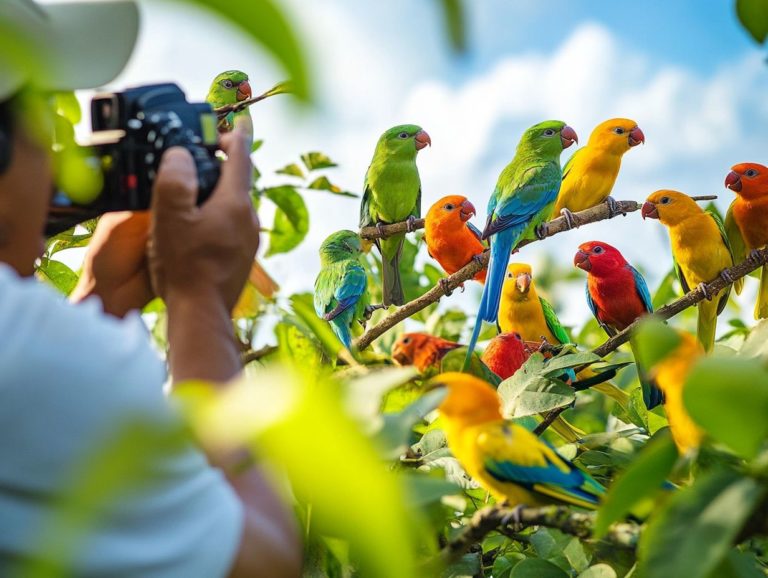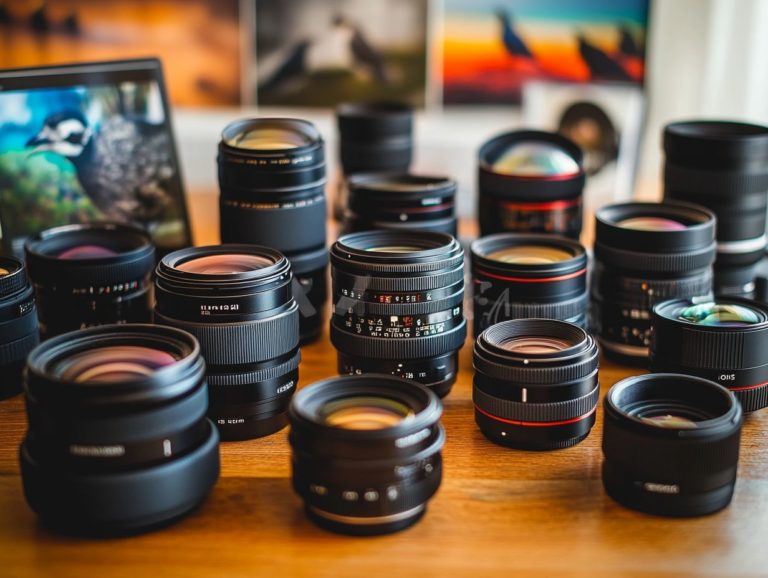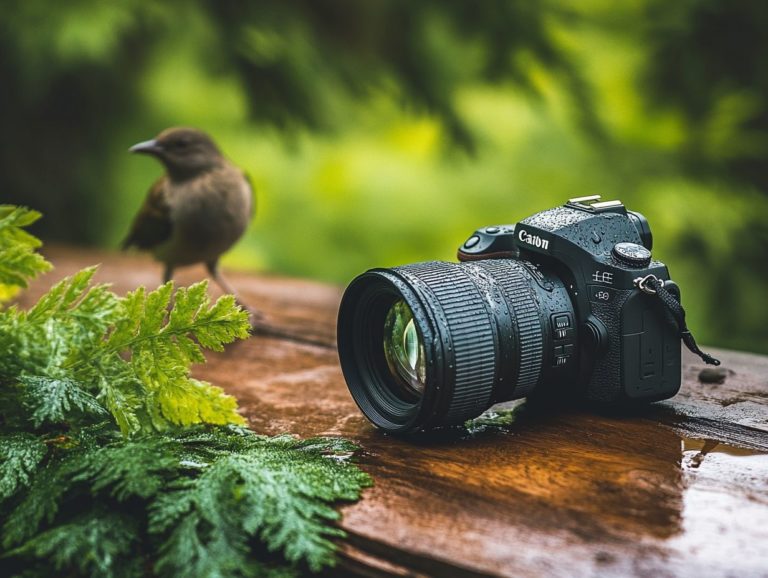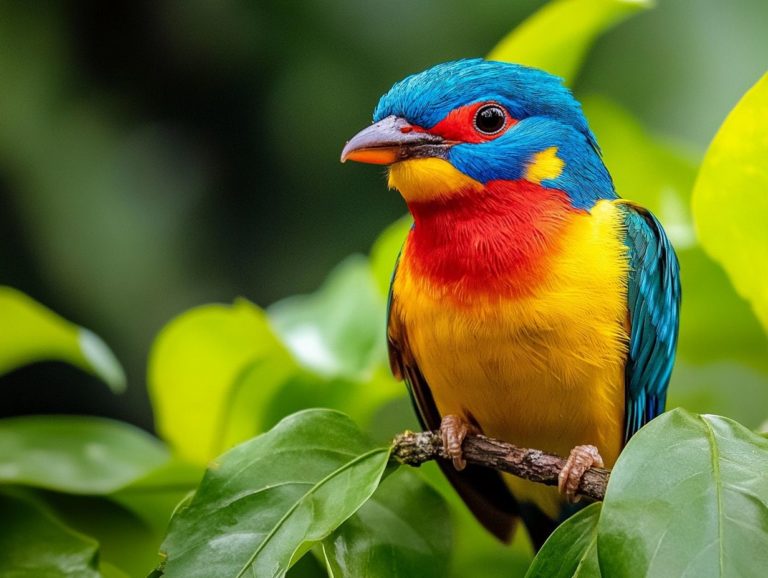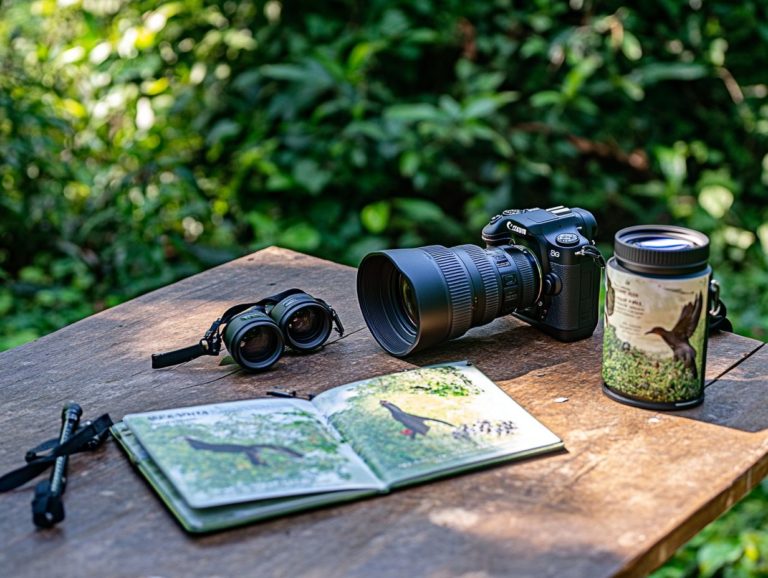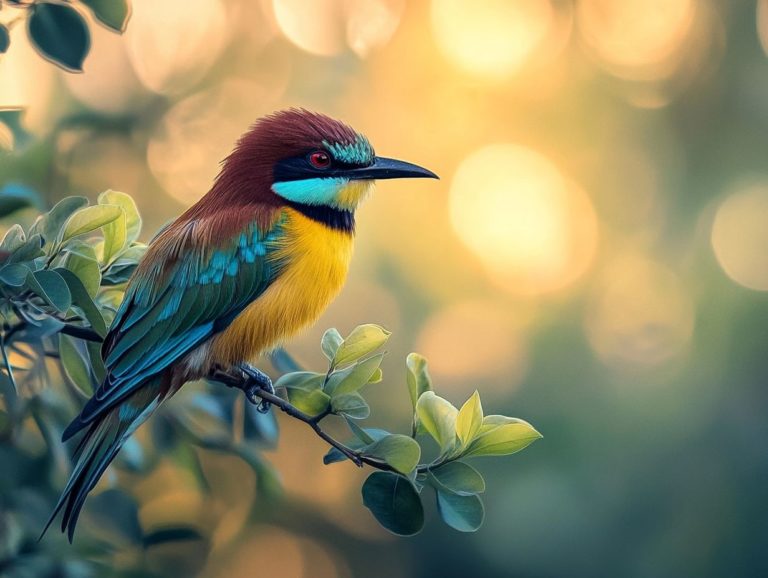How to Create Stunning Bird Portraits
Bird photography connects you with nature. Capture the beauty and unique personalities of our feathered friends.
Get ready to dive into everything you need to take your bird photography to the next level! From gear to techniques, we cover it all!
This guide highlights the best spots for birdwatching and offers practical tips to attract birds into your frame.
Whether you re just starting or looking to refine your skills, this resource will empower you to capture breathtaking images that resonate.
Contents
- Key Takeaways:
- Equipment and Settings for Bird Photography
- Composition and Lighting Techniques
- Best Locations for Bird Photography
- Tips for Attracting Birds to Your Camera
- Frequently Asked Questions
- What are the key elements of creating stunning bird portraits?
- Do I need a professional camera to create stunning bird portraits?
- How can I achieve perfect lighting for my bird portraits?
- What are some composition tips for creating stunning bird portraits?
- How important is patience when creating stunning bird portraits?
- What post-processing techniques can enhance my bird portraits?
Key Takeaways:
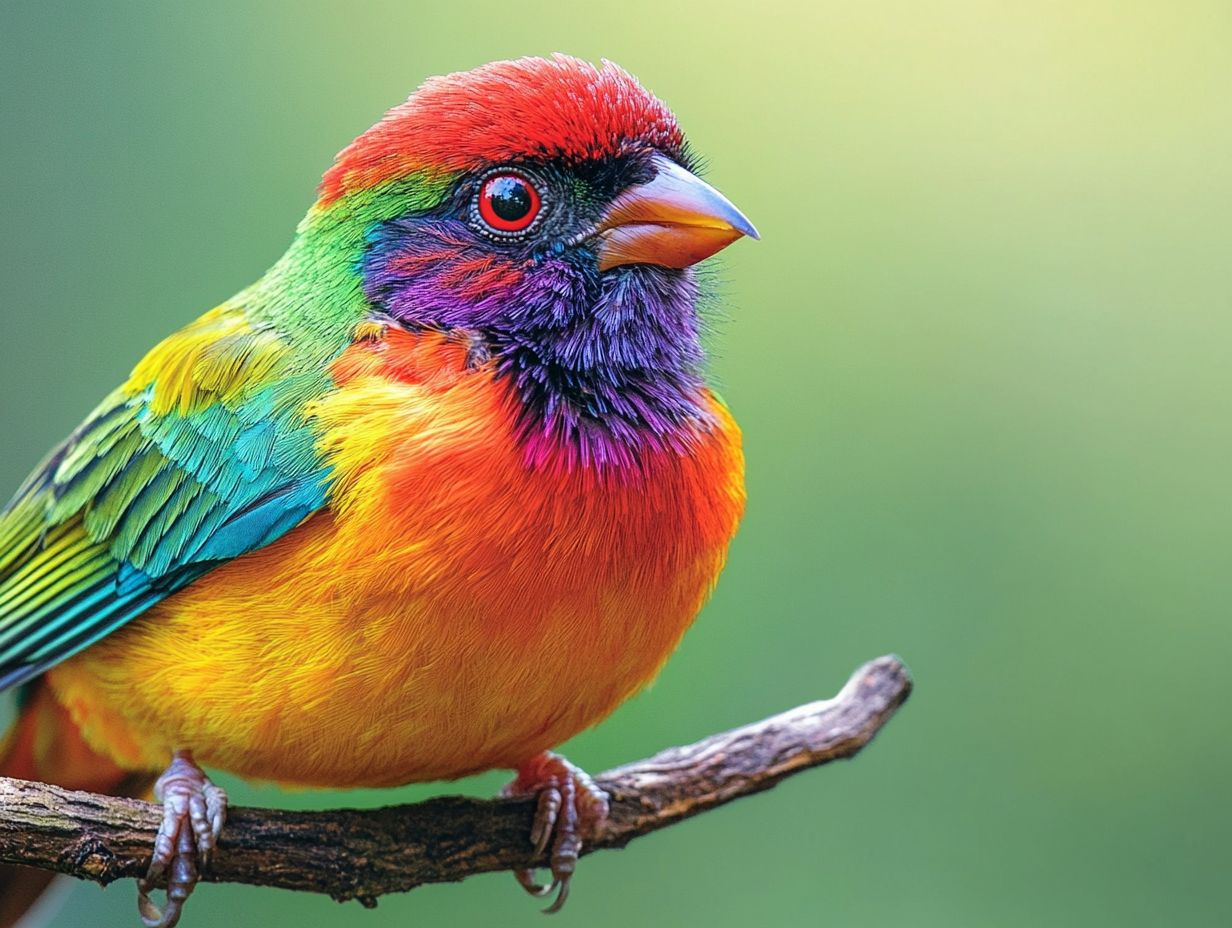
- Invest in a quality camera and lens to capture clear and detailed bird portraits.
- Experiment with different lighting techniques and compositions to create stunning and dynamic images.
- Choose the best locations for bird photography, such as top spots known for a variety of bird species.
What are Bird Portraits?
Bird portraits are captivating images that showcase the essence of various bird species. For those interested in capturing these stunning visuals, following tips for photographing rare bird species can help highlight unique plumage, intricate details, and vibrant colors.
These photographs celebrate wildlife, capturing the enchanting beauty of birds in their natural habitats. For stunning results, learn how to use natural light in bird photography to create close-ups that reveal textures and patterns of feathers.
Bird portraits not only focus on the subject but also evoke emotions and foster a deeper connection to wildlife. They remind us of the beauty around us and the importance of conservation efforts.
Equipment and Settings for Bird Photography
The right equipment and settings are essential for achieving exceptional bird photography. They allow you to capture the beauty and intricacy of your avian subjects.
Choosing an ideal camera and lens is your first step toward stunning results. Investing in high-quality gear dramatically impacts how you capture vibrant colors and intricate designs.
By understanding exposure, distance from the lens to the subject, and autofocus settings, you can tailor your approach to different bird species and their behaviors.
Camera and Lens Recommendations
Choosing the right camera and lens is crucial for your bird photography success. It influences the quality of your images and your ability to seize fleeting moments.
A DSLR or mirrorless camera is typically best, paired with a telephoto lens of at least 300mm for sharp focus on distant subjects. Investing in lenses with image stabilization helps counteract camera shake, resulting in sharper images.
For beginners, the Canon EOS 90D combined with a 100-400mm f/4.5-5.6L IS II USM lens is a fantastic choice. It offers excellent autofocus performance to keep even the most elusive birds in focus.
Alternatively, consider Nikon’s Z6 with a 200-600mm f/5.6-6.3 VR lens. It provides remarkable versatility for capturing impressive close-ups and wide shots.
These combinations deliver vibrant colors and intricate details while performing well in low light. They are perfect for capturing birds during the magical golden hours of dawn or dusk.
Pay attention to features such as weather-sealing and lightweight designs, which enhance your mobility in various habitats, from dense forests to open fields.
Grab your camera and start capturing the magic of bird photography today!
Recommended Camera Settings
Setting your camera correctly is essential for achieving outstanding results in bird photography. This allows you to capture wildlife in action without sacrificing detail or quality. Start with a fast shutter speed ideally around 1/1000th of a second or faster, depending on the species and the conditions. This will freeze those mesmerizing moments of birds in flight.
Utilize a camera setting that keeps moving subjects in focus to ensure sharp images. Don t forget to adjust your exposure settings to maintain vibrant colors even in changing light.
Using the right aperture is crucial. A wider aperture (lower f-number) lets more light into the lens, creating that beautiful background bokeh (a blurred background effect) that isolates the bird from its surroundings and makes it pop. If you’re shooting in low-light situations, a higher ISO can be your best friend, but be cautious; high ISO settings can introduce noise that detracts from image clarity.
Master these key settings to unlock stunning bird photography—shutter speed, aperture, and ISO. You can adapt to various environments and learn how to use natural framing in bird photography to capture breathtaking images of birds in their natural habitats.
Composition and Lighting Techniques
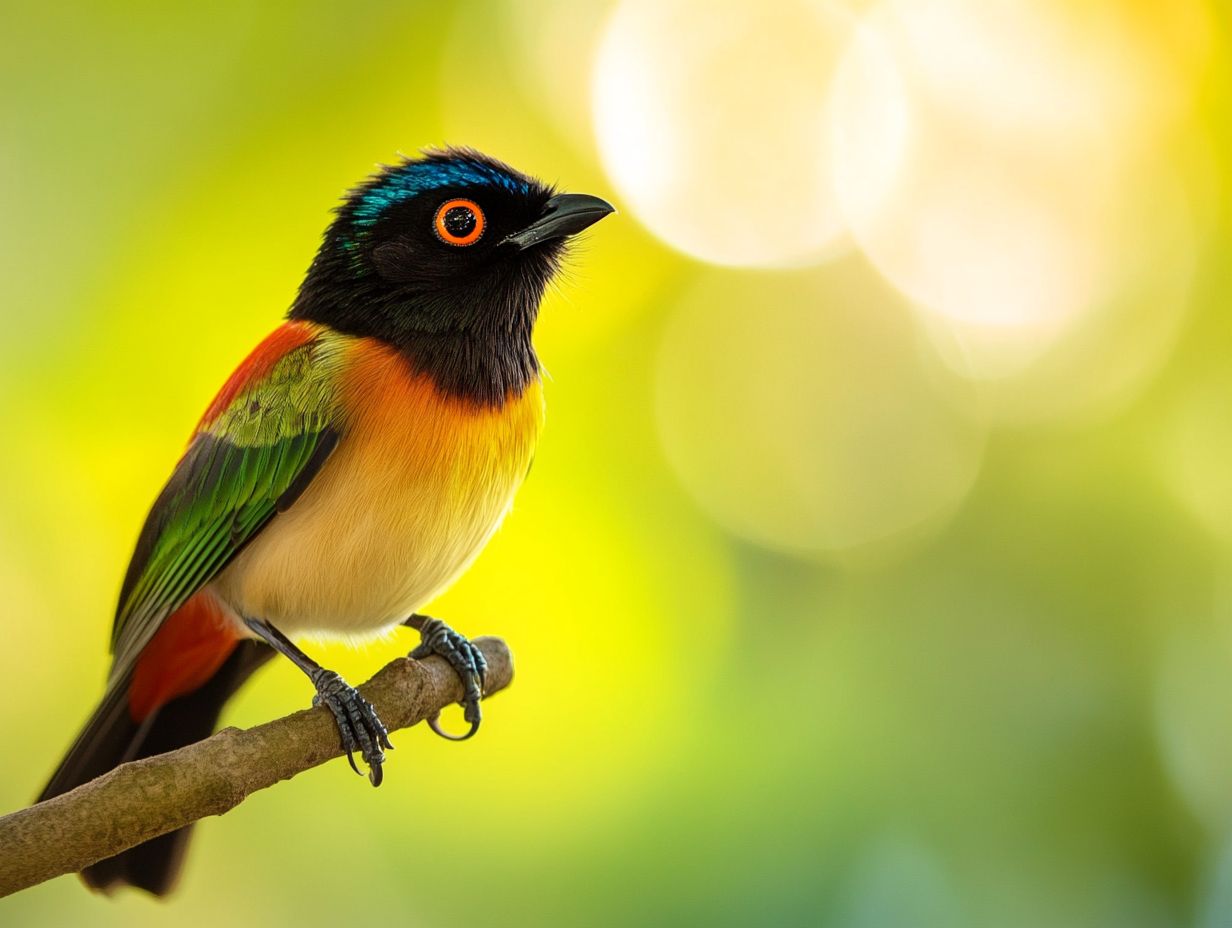
Effective composition and lighting techniques form the cornerstone of breathtaking bird photography. By grasping the principles of composition, you can craft dynamic images that accentuate the bird’s pose, plumage, and its connection with the surroundings.
Lighting is equally vital. Whether you re harnessing the warmth of natural light during golden hour or utilizing artificial sources, the right technique will illuminate intricate details and elevate the overall mood of your photograph.
Creating Dynamic Compositions
Creating dynamic compositions in bird photography involves strategically arranging elements within your frame to captivate your viewer s attention and accentuate the subject s beauty. By employing techniques like leading lines, framing, and negative space, you can significantly elevate the visual allure of your images. This allows the bird to stand out against its backdrop.
Exploring how to incorporate these techniques can transform your ordinary shots into captivating narratives. For instance, leading lines can guide the viewer s gaze directly to the bird, adding depth and intrigue to your scene. Framing, whether through natural elements like branches or urban structures, can further isolate your subject, providing both context and focus.
Utilizing a blurred background, achieved through a shallow depth of field, can make the bird pop against its surroundings. This emphasizes its intricate details. Mastering these elements gives you the power to create not just images, but mesmerizing stories that resonate deeply with your audience.
Using Natural and Artificial Lighting
Utilizing both natural and artificial lighting effectively is crucial for capturing high-quality bird photographs. Lighting significantly affects the mood and detail in your images. Natural light, particularly during the golden hour, provides warm and soft illumination that enhances the colors of the bird’s plumage while minimizing harsh shadows.
In contrast, artificial lighting fills in shadows and creates controlled environments. This allows you to achieve specific artistic effects even in challenging conditions.
Choosing the right time and type of lighting requires understanding the advantages and disadvantages of each option. Natural lighting offers a sense of authenticity and beauty that can be hard to replicate artificially, yet it can also be unpredictable, fluctuating with varying weather conditions. While the golden hour is frequently celebrated as the ideal time for outdoor shoots, midday sun can cast harsh shadows that detract from the overall image.
On the flip side, artificial lighting grants you precise control over shadows and highlights, making it an excellent choice for studio setups or low-light environments. However, improper use can result in unnatural-looking images.
Start blending both methods today for stunning results! Use natural light as your primary source and supplement it with artificial light to enhance specific features as necessary.
Best Locations for Bird Photography
Identifying the ideal locations for bird photography is essential for capturing breathtaking portraits and vibrant wildlife moments. Different habitats draw various species across the seasons, and understanding this can elevate your photography game.
Parks, wetlands, and coastal regions serve as prime locations for photographers eager to document birds in their natural environments. Seasonal shifts like spring migrations or winter feeding habits significantly influence which species you might encounter. Familiarizing yourself with the unique characteristics of each location is key to maximizing your chances of a successful shoot.
Top Spots for Capturing Stunning Bird Portraits
To capture stunning bird portraits, seek out diverse habitats like wetlands, parks, and coastal regions. These areas are teeming with a wealth of species waiting for your lens. Consider visiting places like RSPB reserves, which are conservation areas for birds in the UK, and Wildlife Trusts, which manage nature reserves in various locations. For those looking to enhance their skills, learning how to photograph migratory birds can provide invaluable insights. These spots provide ideal settings for both birdwatching and photography, granting you access to unique species like Puffins, Kingfishers, and Harlequin Ducks.
Seasonal factors, such as migration patterns in spring or winter feeding spots, can significantly enhance your chances of encountering birds and securing breathtaking images. Take, for example, the renowned Birdwatching Area at the Lower Rio Grande Valley National Wildlife Refuge in Texas a true haven for bird lovers. With over 500 species documented, including the elusive Green Jay and the striking Altamira Oriole, you re bound to find something extraordinary. Don t miss your chance to explore this birdwatching paradise!
Catch the magic of dawn or dusk to see birds at their most active! Plan your visits for early mornings or late afternoons when the lighting is optimal. The wetlands of Florida s Merritt Island National Wildlife Refuge offer glimpses of everything from Roseate Spoonbills to Bald Eagles, providing the chance to capture birds in flight against dramatic backdrops.
Always bring a long lens, which allows photographers to capture close-up shots without disturbing the birds. Remember to be patient; sometimes, the most remarkable photographs reveal themselves when you least expect it.
Tips for Attracting Birds to Your Camera
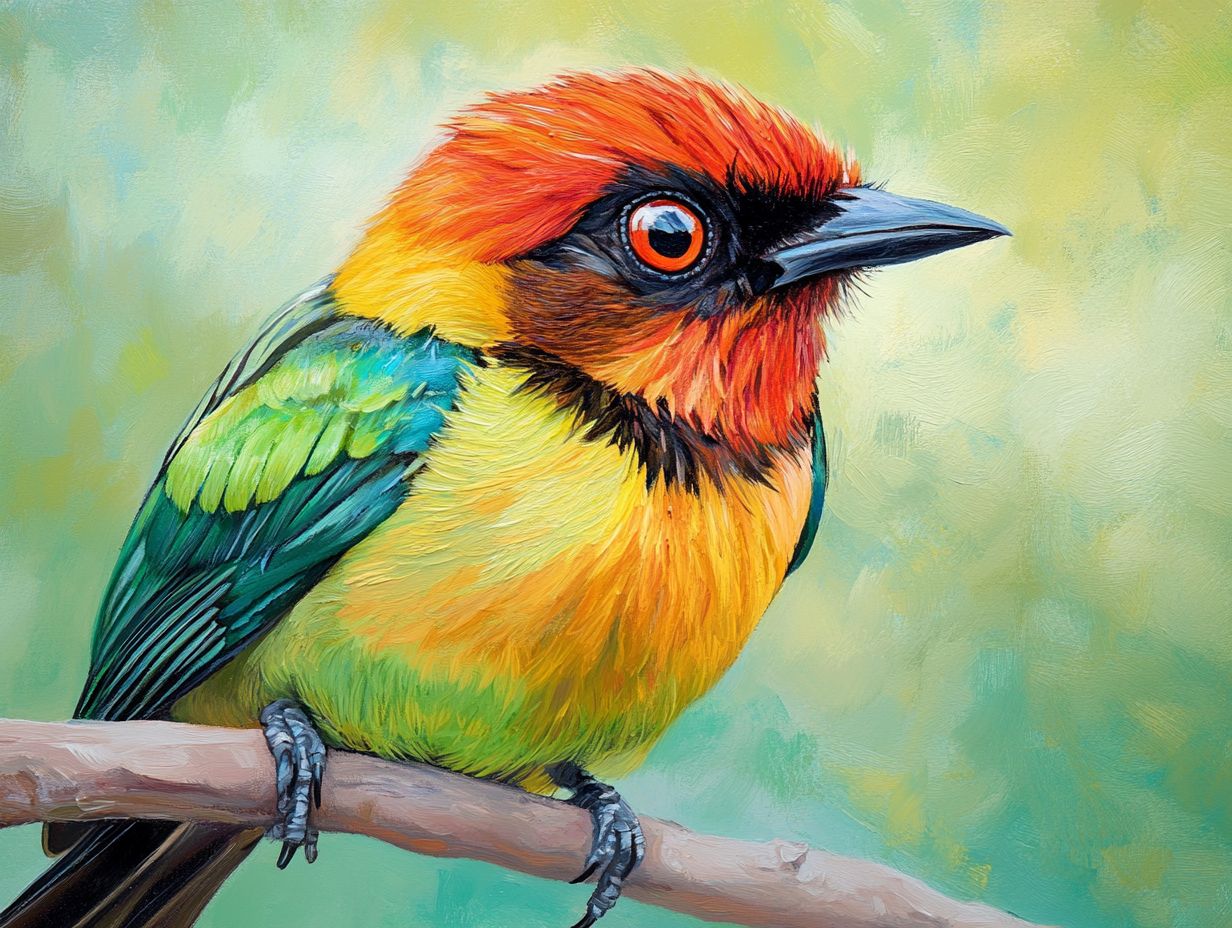
Attracting birds to your camera requires a thoughtful approach that maximizes your opportunities for interaction and successful photography while fostering a bird-friendly environment. Use a variety of techniques to appeal to different species and their unique habitat preferences.
Strategically placing bird feeders stocked with seeds and providing accessible water sources can entice a variety of species to your yard or selected location, enhancing your overall wildlife experience. By learning about the behavior and habitat preferences of specific birds, you can customize your setup to capture stunning images while minimizing any disruption to the wildlife.
Understanding the elements in their surroundings, including lighting and background, can significantly improve your photographs. To capture stunning images, explore techniques for photographing birds in flight. Get ready to immerse yourself in the exciting world of bird photography!
Creating a Bird-Friendly Environment
Creating a bird-friendly environment is a great way to attract a diverse array of species, enhancing your photography opportunities. By cultivating an inviting space, you not only attract birds but also improve the quality of your captured images.
When you design a space that encourages wildlife to visit and interact, you open the door to beautiful moments waiting to be captured. This allows you to focus on the details and dynamic interactions of your feathered subjects.
By incorporating native plants that offer natural food sources and shelter, you can significantly boost the variety of birds in your area, enriching the habitat and ensuring a vibrant ecosystem. Providing safe perches and tranquil spaces helps them feel secure, encouraging them to linger and giving you plenty of chances to snap stunning photographs of their beautiful plumage and behavior.
In addition to planting native flora, add feeders filled with a variety of seeds to cater to different species, ensuring that your setup is creative and diverse. Water sources, like birdbaths or small ponds, not only quench their thirst but also serve as essential bathing spots, attracting even more feathered visitors.
Thoughtfully placing these elements creates zones where wildlife can comfortably interact, allowing you to patiently observe and capture their beauty.
By designing your landscape to promote these interactions, you cultivate a deeper appreciation for the natural world. Don’t miss the chance to capture stunning bird photos; each photography session becomes a rewarding experience, brimming with vibrant life and the thrill of discovery.
Using Bird Feeders and Attractants
Using bird feeders and various attractants effectively can dramatically enhance your chances of capturing breathtaking bird photographs. This brings the beauty of wildlife closer to your lens and creates dynamic opportunities for close-up shots.
Choosing the right type of feeder and food is essential. For example, suet feeders, which hold a high-energy food made from animal fat, are a magnet for woodpeckers, while seed feeders can draw in finches and sparrows, ensuring each has its preferred settings to thrive. Position these feeders in visible spots surrounded by natural cover to make birds feel secure, giving you ample opportunities to snap stunning close-ups that showcase their vibrant colors and unique traits.
Nectar feeders can be fantastic for attracting hummingbirds, which are not only exquisite but also incredibly agile. They provide dynamic photographic moments that are hard to resist, ensuring that your photography captures the essence of their beauty. To boost bird activity, consider using specialized blends tailored to specific avian visitors, enhancing the overall quality of your bird photography.
Placing feeders near water sources can further entice birds to visit more frequently, increasing your chances of capturing them in action and enhancing your overall photography experience. By crafting an inviting environment filled with natural perches and employing techniques to blend into the background, you can focus on the interaction with wildlife.
Frequently Asked Questions
What are the key elements of creating stunning bird portraits?
The key elements of creating stunning bird portraits include proper lighting, composition, and focus. To enhance your skills, learning how to get started with bird photography is also important, as it emphasizes having a clear subject and background.
Do I need a professional camera to create stunning bird portraits?
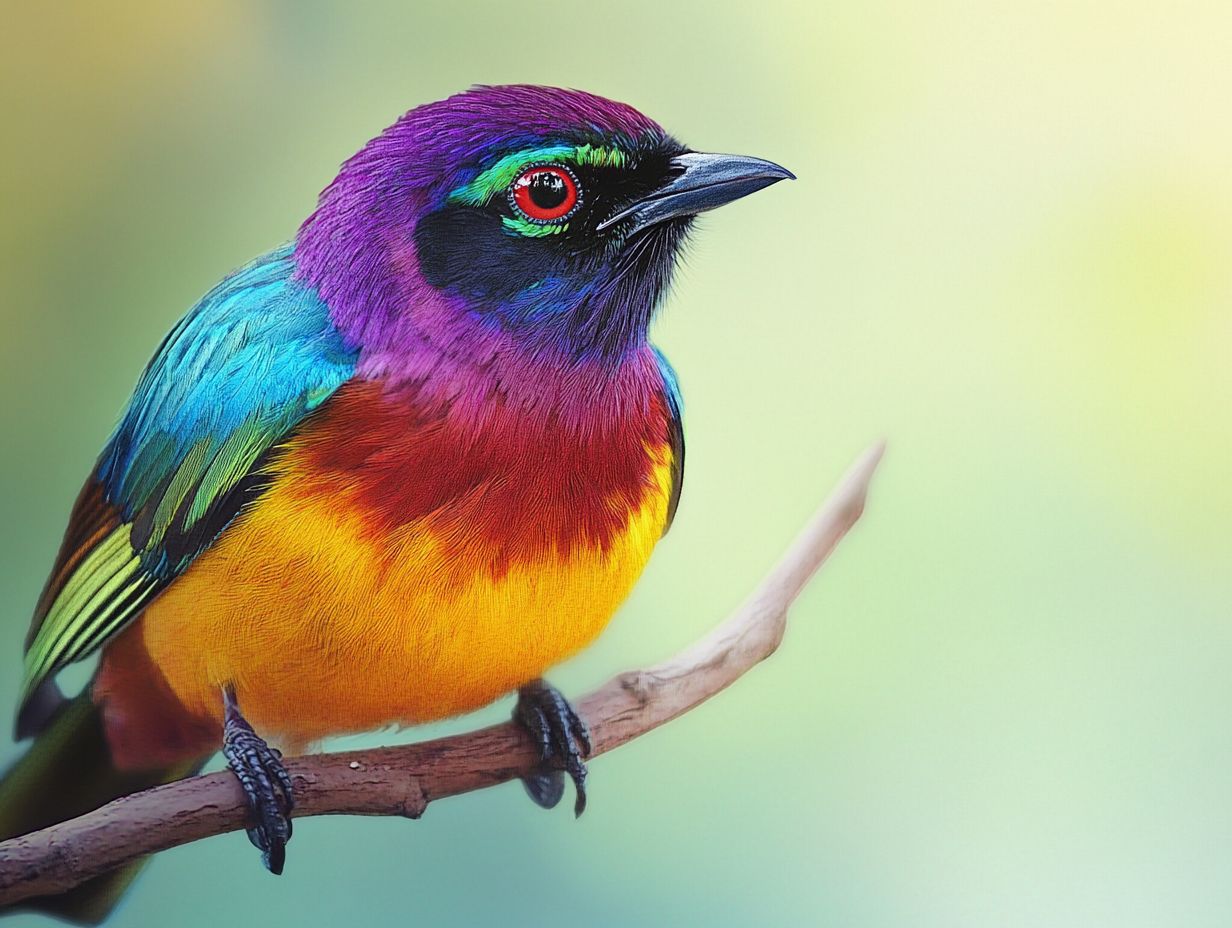
No, you can use any camera as long as you understand its features and settings. A DSLR or mirrorless camera offers more control over the final image, but a smartphone can also produce great results.
How can I achieve perfect lighting for my bird portraits?
The best lighting for bird portraits is soft, natural light. Avoid harsh midday sunlight and instead shoot during the early morning or late afternoon. To enhance your shots further, consider learning the basics of bird photography composition, which can help you use reflectors or diffusers to control the light and create a more flattering effect on your subject.
What are some composition tips for creating stunning bird portraits?
Capture birds in their natural habitat. Use the rule of thirds for a balanced, eye-catching image.
Incorporate leading lines and negative space for added interest. These techniques can make your portraits stand out.
How important is patience when creating stunning bird portraits?
Patience is essential in bird photography. Birds can be unpredictable and easily startled, so take your time.
Understand their behavior and habits. Be prepared to wait for that perfect shot!
What post-processing techniques can enhance my bird portraits?
Adjusting exposure, contrast, and sharpness can significantly improve your bird portraits. For more tips on how to photograph birds with different backgrounds, these simple tweaks can transform your images!
Try advanced techniques like lightening or darkening specific areas to draw attention. You’ll be amazed at the difference it makes!

